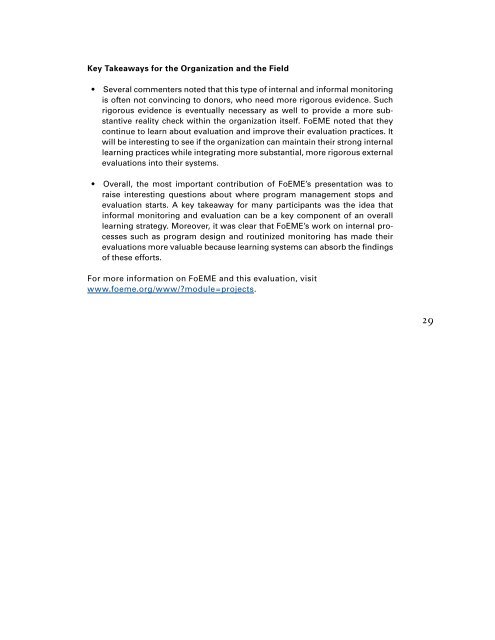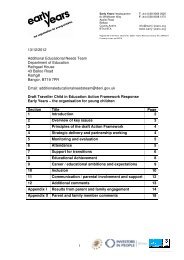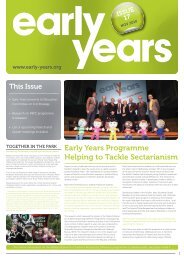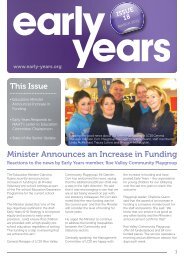Learning from Nine Examples of Peacebuilding Evaluation
Learning from Nine Examples of Peacebuilding Evaluation
Learning from Nine Examples of Peacebuilding Evaluation
You also want an ePaper? Increase the reach of your titles
YUMPU automatically turns print PDFs into web optimized ePapers that Google loves.
Key Takeaways for the Organization and the Field<br />
• Several commenters noted that this type <strong>of</strong> internal and informal monitoring<br />
is <strong>of</strong>ten not convincing to donors, who need more rigorous evidence. Such<br />
rigorous evidence is eventually necessary as well to provide a more substantive<br />
reality check within the organization itself. FoEME noted that they<br />
continue to learn about evaluation and improve their evaluation practices. It<br />
will be interesting to see if the organization can maintain their strong internal<br />
learning practices while integrating more substantial, more rigorous external<br />
evaluations into their systems.<br />
• Overall, the most important contribution <strong>of</strong> FoEME’s presentation was to<br />
raise interesting questions about where program management stops and<br />
evaluation starts. A key takeaway for many participants was the idea that<br />
informal monitoring and evaluation can be a key component <strong>of</strong> an overall<br />
learning strategy. Moreover, it was clear that FoEME’s work on internal processes<br />
such as program design and routinized monitoring has made their<br />
evaluations more valuable because learning systems can absorb the findings<br />
<strong>of</strong> these efforts.<br />
For more information on FoEME and this evaluation, visit<br />
www.foeme.org/www/module=projects.<br />
29














